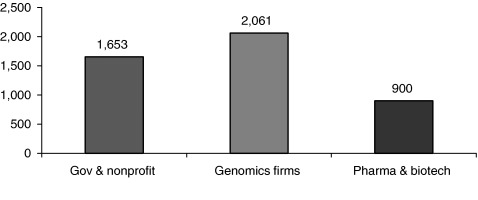The science commons in life science research: structure, function, and value of access to genetic diversity.
Innovation in the life sciences will depend on how a lot info is produced in addition to how extensively and simply it’s shared.
Policies governing the science commons – or different, extra restricted informational areas – decide how extensively and rapidly info is distributed. The objective of this paper is to spotlight why the science commons issues and to analyse its construction and perform.
The essential lesson from our evaluation is that each the traits of the bodily assets (from genes to microbes, vegetation and animals) and the norms and beliefs of the completely different analysis communities – assume of the Bermuda guidelines in the human genome case or the Belem declaration for bioprospecting – matter in the institutional selections made when organising the science commons.
We additionally present that the science commons contributes to fixing some of the collective motion dilemmas that come up in the manufacturing of information in Pasteur’s Quadrant, when info is each scientifically necessary and virtually relevant.
We present the significance of two of these dilemmas for the life sciences, which we name respectively the diffusion-innovation dilemma (how readily innovation diffuses) and the exploration-exploitation dilemma (when utility requires collective motion).

Science foresight utilizing life-cycle evaluation, textual content mining and clustering: A case research on pure air flow.
Science foresight includes a spread of strategies to analyze previous, current and anticipated analysis tendencies, and makes use of this info to predict the longer term standing of completely different fields of science and know-how.
With the power to establish high-potential improvement instructions, science foresight is usually a great tool to assist the administration and planning of future analysis actions. Science foresight analysts can select from a relatively giant selection of approaches.
There is, nevertheless, comparatively little details about how the assorted approaches could be utilized in an efficient means.
This paper describes a three-step methodological framework for science foresight on the idea of printed analysis papers, consisting of (i) life-cycle evaluation, (ii) textual content mining and (iii) information hole identification by means of automated clustering.
The three steps are linked utilizing the analysis methodology of the analysis papers, as recognized by textual content mining. The potential of combining these three steps in one framework is illustrated by analyzing scientific literature on wind catchers; a pure air flow idea which has acquired appreciable consideration from academia, however with fairly low utility in apply. The information gaps which are recognized present that the automated foresight evaluation is certainly ready to discover uncharted analysis areas.
Results from a sensitivity evaluation additional present the significance of utilizing full-texts for textual content mining as a substitute of solely title, key phrases and summary. The paper concludes with a mirrored image on the methodological framework, and offers instructions for its supposed use in future research.



